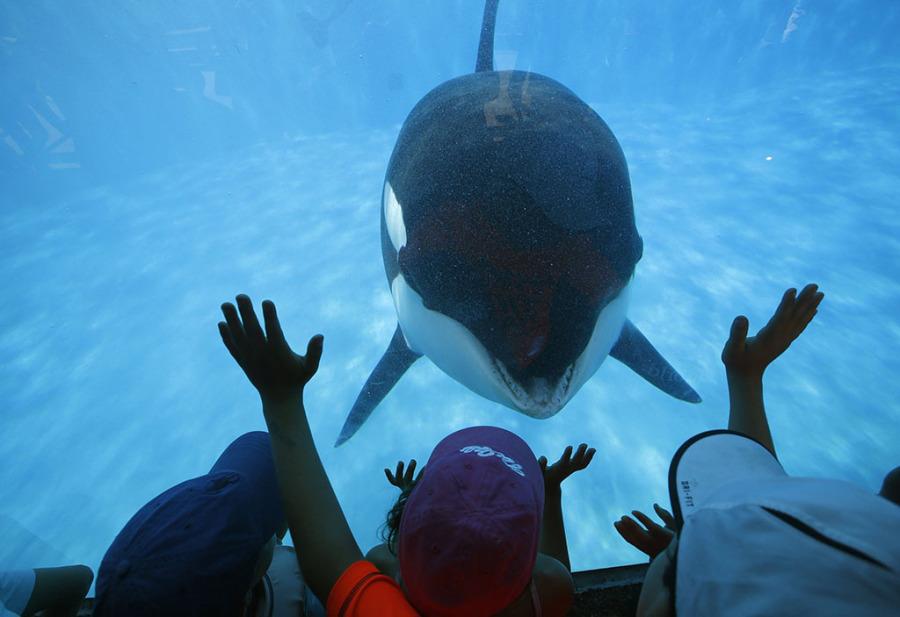Imagine being confined to your room all your life. In only a small space of ten feet by ten feet, you are there with no one but yourself. You have scheduled meal times, and are made to work for the food you receive. You are separated from your friends and family, and only interact with others for small hours of the day before being caged in again. Worst of all, you are ridiculed and made a show out of, doing party tricks for the very people who have you trapped in your room.
This is how Lolita, the orca whale currently residing at Miami Seaquarium, has felt for the last 40 years. Southern Resident Orca whales were classified as endangered in 2005, and since Lolita, who is 50 years of age, falls into that category, it is possible that she is closest to being free than she ever has been before. Miami residents have started a petition to officially include Lolita in the Endangered Species Act.
Lolita was taken away from her pod in 1970, and freeing her would include reuniting her with her 82 year old mother.The tank she lives in now is 35 feet wide and 80 feet across, which is “below standards of keeping captive killer whales in tanks.” Lolita’s solitude is due to her longtime orca companion, Hugo, dying of a brain aneurysm when he repeatedly bashed his head against the wall of the tank in 1980. Since September 30th, Miami residents have been seen protesting outside of the Miami Seaquarium for the freedom of Lolita.
However, Lolita isn’t the only orca suffering through this, though she has been for the longest time. Killer whales are known to often be mistreated in captivity. Most notably is Tilikum, who now resides in SeaWorld, and was also psychologically tortured for most of his early life. This mistreatment caused Tilikum to become inherently aggressive and dangerous, therefore causing the death of three of his trainers. Almost all his life, Tilikum has been kept in small enclosures that limited his ability to swim or even interact with other orcas.
When asked about whether or not whales in captivity are a positive or negative thing, Marine Science teacher Mr. Carruthers said, “There’s value in people who have never [gotten] to see an orca. Any animal kept in captivity is not the same as [it is when] kept in the wild, [but there is] an educational value in it.”
However, having such a large animal in captivity is very different to having one in captivity and making it perform tricks and shows for spectators. Especially when confronted with the fact that such large animals tend to become aggressive when kept in such small tanks.
“Predators are predators. A predator in captivity… anytime you have humans interact with predators, you’re going to have issues. SeaWorld may try to protect their trainers but nothing is foolproof.”
SeaWorld is an international company, and even if it doesn’t necessarily provide for their whales, they definitely have more money than Miami Seaquarium, which is known for their subpar tanks and unclean sidewalks. In September 2003, the park was deemed unsafe for the public, with 127 safety violations and 36 fire hazards. Not only is this park a danger for their whales, but also for the humans going to look for torture crudely disguised as entertainment.
Recently, the aquarium was fined $7,000 by the Occupational Safety and Health Administration for allowing trainers to work with a killer whale without sufficient protection. This citation stemmed from a complaint from the Animal Legal Defense Fund (ALDF).
Jenni James, who is a litigation fellow with the ALDF said, “This citation is a significant victory for Lolita as it restores a small piece of her dignity and body autonomy. [We] are thrilled that Lolita will now be treated more like an orca and less like a surfboard.”









Kimiyo • Oct 1, 2014 at 10:12 AM
Great article! Very compelling; I would love to know how can get involved!